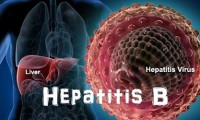-
Hep C Antibody Test
- Source: Medical News Today
- 1,124
- July 10, 2018
-
Viscofan to Trial Stem Cell Implant for Severe Cardiac Insufficiency
- Source: Verdict Medical Devices
- 1,018
- July 10, 2018
-
Red Wine and Green Tea could Treat Congenital Inborn Metabolic Diseases
- Source: Science Daily
- 735
- July 10, 2018
-
Smart Bandage to Enhance Wound Healing
- Source: The Verge
- 1,645
- July 10, 2018
-
Baclofen, ‘Wonder Drug’ for Alcohol Use Disorder Proves to be Unsuccessful
- Source: TechExplorist
- 742
- July 9, 2018
-
Recent Developments in HBV Diagnosis & Treatment
- Source: News Medical
- 838
- July 9, 2018
-
Gene Editing Control Using Amino Acids
- Source: FierceBiotech
- 1,021
- July 9, 2018
-
Novel Blood Test to Determine Right Time for Drug Administration
- Source: The Verge
- 858
- July 6, 2018
-
Zika Virus Detection Using Smartphone Based NBC Detection Tool
- Source: The Verge
- 1,990
- July 6, 2018
-
Increased Bilirubin can Reduce Cardiovascular Risk
- Source: India Times
- 822
- July 5, 2018
your submission has already been received.
OK
Subscribe
Please enter a valid Email address!
Submit
The most relevant industry news & insight will be sent to you every two weeks.













